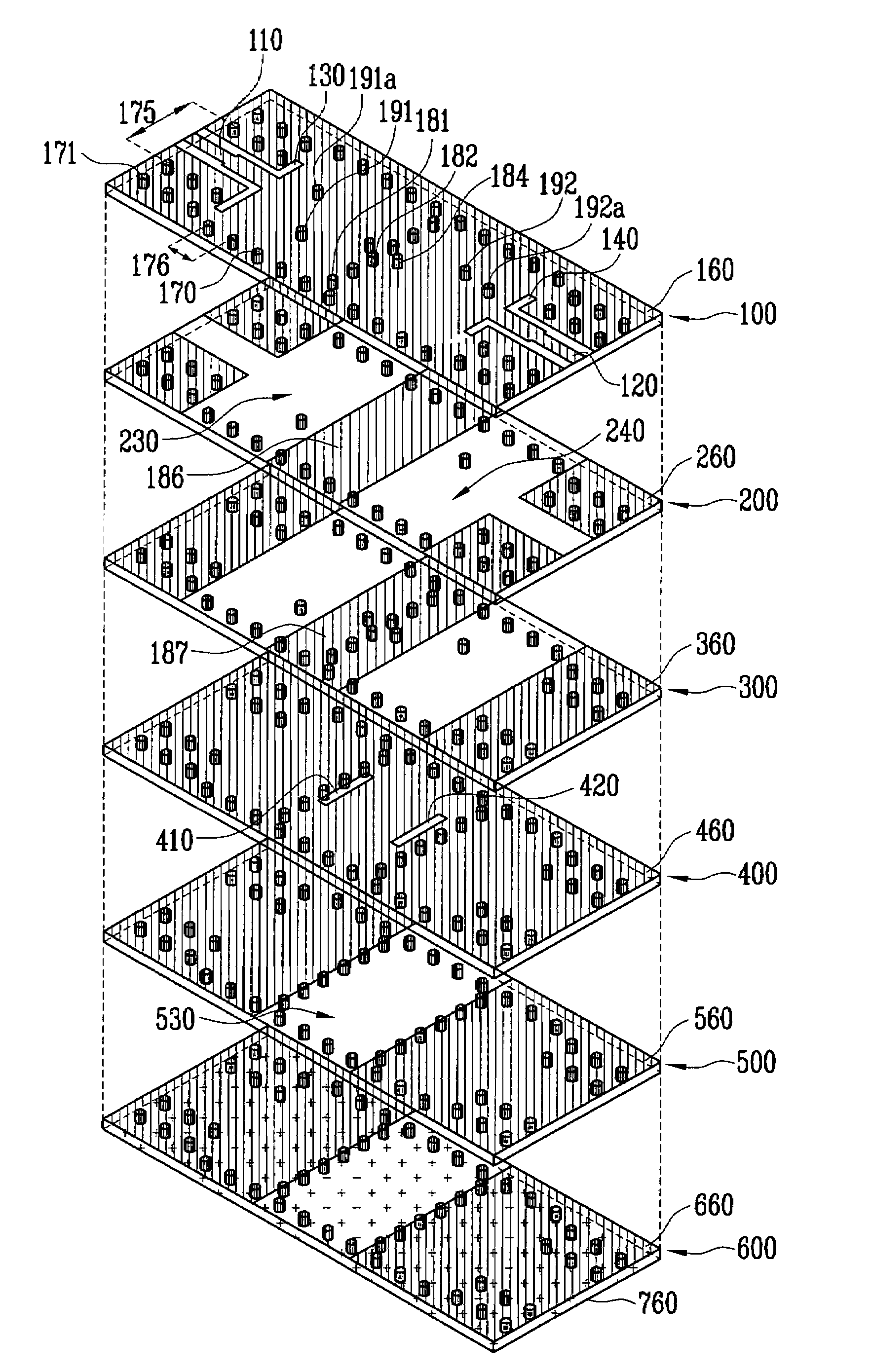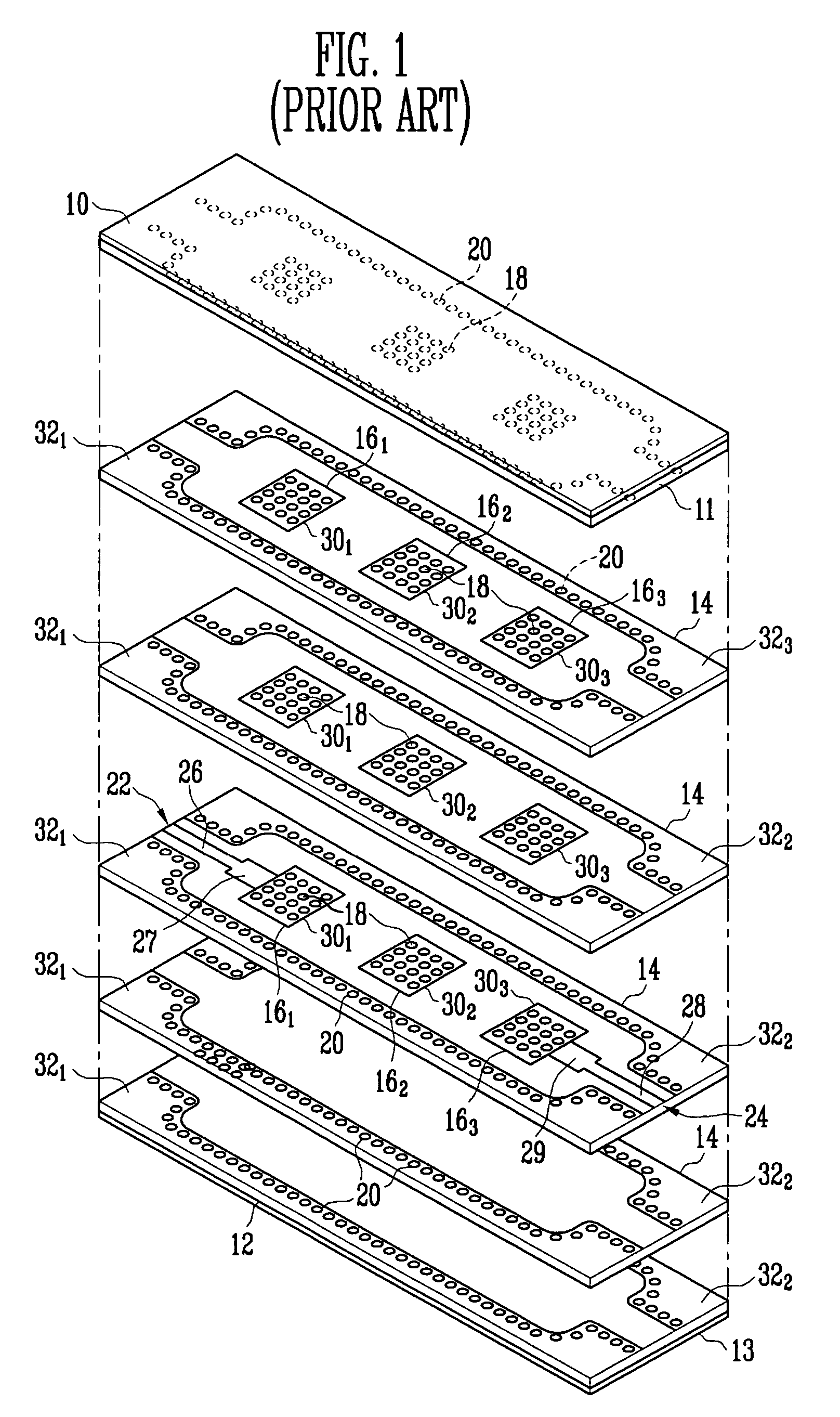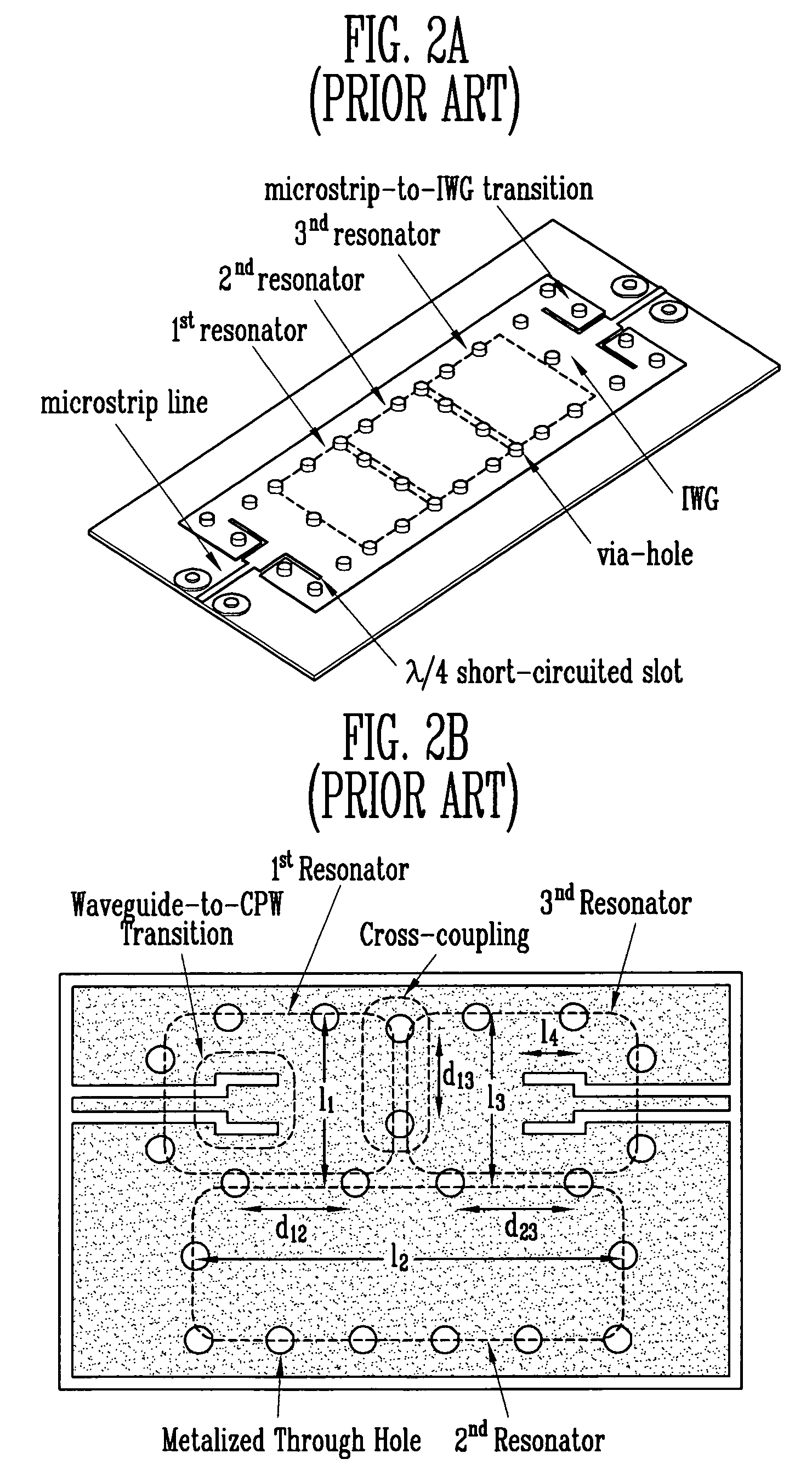Dielectric waveguide filter with cross-coupling
a technology of dielectric waveguide and cross-coupling, which is applied in the direction of waveguides, resonators, electrical equipment, etc., can solve the problems of inability to control the height of the dielectric waveguide, the most difficult to achieve miniaturization, and the low price is just a filter, so as to suppress radiation loss and spurious broadband
- Summary
- Abstract
- Description
- Claims
- Application Information
AI Technical Summary
Benefits of technology
Problems solved by technology
Method used
Image
Examples
first embodiment
[0045]FIG. 3 is a perspective view illustrating a construction of a dielectric waveguide filter with cross-coupling according to the present invention.
[0046]Referring to FIG. 3, the inventive dielectric waveguide filter includes a first ground plane 160 and a second ground plane 760 at its top and bottom and a dielectric substrate with a multi-layered structure between the two ground planes 160 and 760. The dielectric waveguide filter further includes an input port 110 and an output port 120 (hereinafter, referred to as “input / output ports”) for connection with external systems and other devices; converters 130 and 140 for signal transition from a Transverse ElectroMagnetic (TEM) mode to a transverse electric (TE)10 mode; dielectric waveguide resonators 230, 240, and 530 providing a desired characteristic of the filter; vias 170 for forming each of dielectric waveguide resonators 230, 240, and 530; vias 171 for removing an unwanted waveguide mode; vias 181 and 182 for cross-coupling...
second embodiment
[0076]FIG. 7 illustrates the construction of a dielectric waveguide filter with cross-coupling according to the present invention.
[0077]Referring to FIG. 7, the inventive dielectric waveguide filter includes a first ground plane 160 and a second ground plane 760 at its top and bottom, and a dielectric substrate with a multi-layered structure between the two ground planes 160 and 760. The dielectric waveguide filter further includes an input port 110 and an output port 120 for connecting with external systems and other devices; converters 130 and 140 for transiting a signal from a transverse electromagnetic (TEM) mode to a transverse electric (TE)10 mode; dielectric waveguide resonators 230, 240, and 530 providing a desired characteristic of the filter; vias 170 for forming each of dielectric waveguide resonators 230, 240, and 530; vias 171 for removing an unwanted waveguide mode; vias 181, 182, and 184 for cross-coupling between the dielectric waveguide resonators 230 and 240 dispos...
PUM
 Login to View More
Login to View More Abstract
Description
Claims
Application Information
 Login to View More
Login to View More - R&D
- Intellectual Property
- Life Sciences
- Materials
- Tech Scout
- Unparalleled Data Quality
- Higher Quality Content
- 60% Fewer Hallucinations
Browse by: Latest US Patents, China's latest patents, Technical Efficacy Thesaurus, Application Domain, Technology Topic, Popular Technical Reports.
© 2025 PatSnap. All rights reserved.Legal|Privacy policy|Modern Slavery Act Transparency Statement|Sitemap|About US| Contact US: help@patsnap.com



